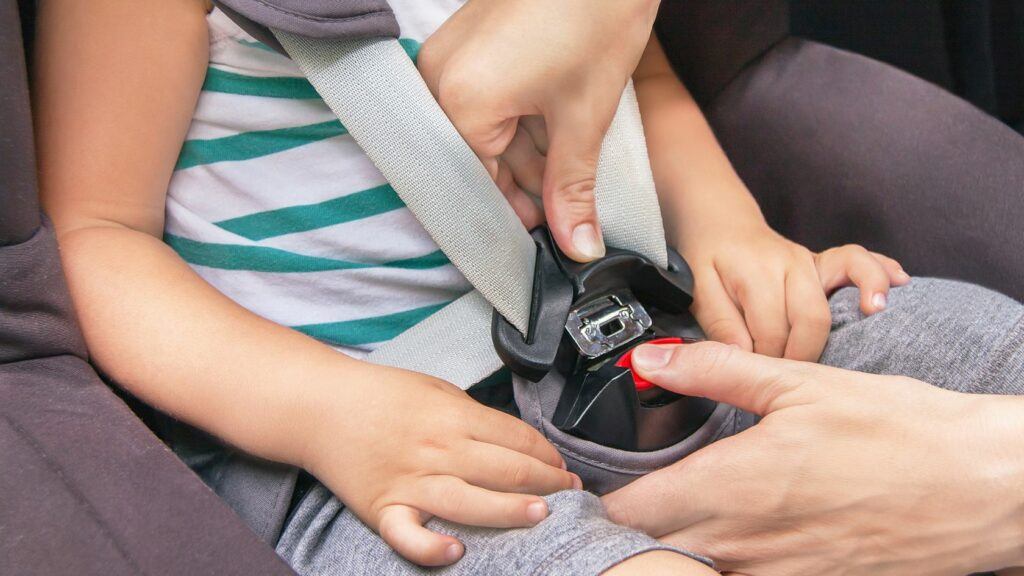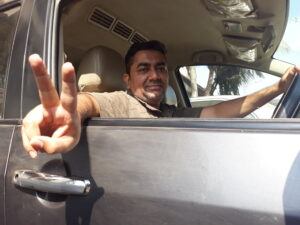
Baby car seat effectiveness and safety hinges on its proper usage. The prevalence of baby car seat misuse is alarmingly high and as parents you should strive to protect your precious ones by avoiding common mistakes while using them.
In this informative blog post, you will learn about the nuances and uncover the common pitfalls of baby car seat usage.
You will also explore the solutions and tips related to baby car seat comfort and safety.
The Role of Baby Car Seats in Child Safety
In child safety, baby car seats serve as a cocoon of protection for your little ones from potential harm on the road.
These seats are tailored-made shields, meticulously designed to cradle and protect small children during transit. They signify convenience and act as guardians, offering a sense of security that every parent craves.
Baby car seats are intricately manufactured with many safety features, including impact-absorbing materials to secure harness systems. It reflects a fusion of engineering prowess and a profound commitment to safeguarding precious small lives.
However, a concerning trend that puts countless children at risk is the mistakes due to a lack of knowledge while installing and using car seats.
Therefore, understanding the proper techniques for using baby car seats and implementing them appropriately will help you keep your child safe and grant you the ability to embark on journeys with confidence.
Common Mistakes While Using Baby Car Seats
Car seats are designed to provide maximum protection in the event of a crash, but only when they are installed correctly.
Incorrect installation of baby car seats can have devastating consequences for young children in the event of a car accident.
Misuse of loose straps in baby car seats
Misuse of loose straps in baby car seats can bear profound consequences on child car safety. In fact, loose straps are one of the most common misuses of baby car seats which lead to 40% fatalities among children who were not buckled up at all or buckled up incorrectly.
Loose straps can be dangerous because they can allow a child to be ejected from the car seat in a crash.
If those straps are not snugly secured, they render the entire setup virtually ineffective. Loose straps compromise the seat’s ability to protect your child, turning a safety device into a potential hazard.
During an accident or sudden braking, a child restrained by loose straps can be violently jolted, leading to severe injuries.
The straps are the lifeline, the first line of defense, and when misused, they nullify the very purpose of the car seat.
Ensuring a proper fit, where the straps lie flat without twists and can’t be pinched at the shoulders, is not just a recommendation; it’s a fundamental necessity.
Every adjustment matters, for in the tightness of those straps lies the assurance of your child’s safety during every journey.
To prevent loose straps, it is important to tighten them properly each time you put your child in the car seat.
The chest strap should be snug against your child’s chest, and the shoulder strap should be snug against the child’s shoulders.
Both the snug should be such that you are able to fit two fingers between the strap and your child’s chest and one finger between the strap and your child’s shoulder. This is also called the ‘pinch test’.
Here is a small video on how to check the snug and tightness while strapping your child:
Improper Recline Angle
The recline angle of the car seat is crucial for ensuring that the child’s head and neck are properly supported in a crash. An incorrect recline angle can increase the risk of head and neck injuries.
If the recline angle of a car seat is excessively steep it can cause the child’s head to flop forward which increases the risk of airway obstruction and choking. It can also put pressure on the child’s chin and throat, which can lead to injuries.
On the other hand, if the recline angle is too flat it can allow the child’s head to fall back too far, putting pressure on the back of their skull. This can again increase the risk of head and neck injuries and can also make it difficult for the child to breathe properly.
Most car seats will have a recline angle indicator or marking on the back of the seat. While installing or using the car seat, make sure that the recline angle indicator is aligned with the correct mark.
If your car seat does not have a recline angle indicator, you can check the angle by gently tilting the car seat back until the child’s head is in a neutral position.
Correct recline angles differ according to different age groups:
For infants (Rear-facing children under 1 year old), the recline angle should be between 30 and 45 degrees. This will help to keep the child’s head and neck in a neutral position and prevent their head from slumping forward.
For toddlers (Rear-facing children aged 1 to 2 years old), the recline angle should be between 25 and 35 degrees. This will still provide proper support for their head and neck, but it will also allow them to sit up slightly more comfortably.
Incorrect Base or Latch System Installation
The car seat base or LATCH system should be anchored securely to the vehicle’s seat, providing a stable foundation for the car seat.
Improper installation can cause the car seat to move or detach during a crash, putting the child at risk.
If the base or LATCH system is not installed properly, the car seat may detach from the vehicle’s seat during a crash. This could cause the child to be ejected from the car seat, putting them at risk of serious injuries.
An improperly installed car seat may also move too much during a crash, even if it does not detach. This movement can lead a child to be thrown around inside the car seat, increasing the risk of physical injuries.
Even if the car seat does not move, it may not be able to restrain the child effectively in a crash if the base or LATCH system is improperly installed.
When it comes to the base of LATCH system installation, each car seat model has its own specific instructions. As a thumb rule, it is important to follow these instructions exactly to ensure that the car seat is installed properly.
Most vehicles have built-in anchor points for use with LATCH systems. If your car seat has a LATCH system, you should use these anchor points to secure the car seat to the vehicle’s seat.
Second-hand Seats: Assessing the Safeness
When evaluating the safety of a second-hand baby car seat, several crucial factors should be considered.
Firstly, check the expiration date, typically set at six years from the date of manufacture. Over time, materials degrade, diminishing the seat’s crash protection effectiveness. Ensure the seat is not expired before purchasing.
Additionally, verify the recall status on the National Highway Traffic Safety Administration (NHTSA) website, avoiding recalled seats, even if they seem intact.
Thoroughly inspect the seat for any damage, as even minor issues like cracks or tears can compromise its structural integrity. Confirm the completeness of the seat, ensuring all original parts, including the base, straps, and canopy, are present.
Missing or damaged components pose safety risks. If uncertain about a second-hand seat’s safety, err on the side of caution and opt for a new one.
When buying used, prefer reputable sources, avoiding online marketplaces or garage sales.
Ask detailed questions about the seat’s history, including accidents or recalls, and meticulously inspect it for signs of wear and tear, particularly on straps, buckles, and hardware.
Final thoughts
To achieve proper child car seat safety, steering clear of common mistakes while using baby car seats is very important.
From the intricacies of strap adjustment to the meticulous installation, every detail matters. Yet, the pitfalls loom, and awareness is our compass.
The consequences of continued misuse of baby car seats unfold a narrative of potential harm – from head and neck injuries to the ominous specter of ejection.
The journey into safeguarding our little ones extends beyond the mechanical, delving into the consequences of missteps.
As guardians and parents, you must embrace knowledge, stay vigilant, and remain committed to securing the most precious life by avoiding the shortcomings of using baby car seats.

